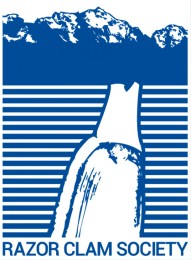Razor clammers: below is an update just received from Washington Department of Fish & Wildlife (WDFW). Take note, “Depurating” ain’t French… it is a fancy way of saying “to be free of impurities” as WDFW indicates in the notes on the domoic acid levels currently found in razor clams.
As always, we will be here to “demystify” the third most popular outdoor licensed recreational activity in Washington State…. that would be razor clamming.
Thank you for all your support.
MARINE TOXIN UPDATE:
Listed below are the most recent marine toxin levels, as announced by the Washington Department of Health (WDOH). To see previous results, see the web link below.
Recall, before a beach can be opened for the harvest of razor clams, WDOH protocol requires that all razor clam samples collected from that beach must test under the action level (20 ppm for domoic acid; 80 µg/100g for PSP; and 16 µg/100g for DSP) on both of two required sample collections, that must be spaced 7 to 10 days apart. The results must also show a declining trend between samples.
Note that in all these samples; only razor clam meat tissue is tested.
Long Beach Area E (north): Collected 4/28/21
· domoic acid = 23 ppm
· PSP = none detected
· DSP = none detected
Twin Harbors Area CL (middle): Collected 4/30/21
· domoic acid = 31 ppm
· PSP = none detected
· DSP = none detected
Copalis Area XK (middle): Collected 5/3/21
· domoic acid = 27 ppm
· PSP = none detected
· DSP = none detected
Copalis Area XL (middle): Collected 5/3/21
· domoic acid = 14 ppm
· PSP = none detected
· DSP = none detected
Copalis Area GS (north): Collected 5/3/21
· domoic acid = 16 ppm
· PSP = none detected
· DSP = none detected
Mocrocks Area BC (south): Collected 5/3/21
· domoic acid = 15 ppm
· PSP = none detected
· DSP = none detected
Mocrocks Area CP (middle): Collected 5/3/21
· domoic acid = 12 ppm
· PSP = none detected
· DSP = none detected
Mocrocks Area MP (north): Collected 5/3/21
· domoic acid = 19 ppm
· PSP = none detected
· DSP = none detected
The Mocrocks razor clam domoic acid levels tests are all the action level. THIS IS THE FIRST OF TWO REQUIRED SETS OF TESTS. No dates will be announced until domoic acid levels in razor clams drop below the action level in two sets of consecutive tests, at least 7 days apart. We will be collecting samples every seven days (as low tides allow) with the hope that some beach may be able to open soon. As always, we will not be looking for harvest opportunities after May 31. This provides razor clam populations the summer to spawn and then recover from spawning, insuring the future of this important resource.
As we have been saying, re-opening this fishery after a long domoic acid closure has always been frustrating. continue to follow the historical pattern of slowly depurating (losing) domoic acid and for the last several months we have observed the levels “bounce around” considerably. As we have previous described, this is a result the individual 12 clams we randomly harvest when we are collecting samples. However, the report above shows some nice declines on all beaches. If you are interested, you can check out the historical domoic acid data at the link below.
These results and the historical record of domoic acid events can be found at: https://wdfw.wa.gov/fishing/basics/domoic-acid/levels (click on “show historical data” and then hover your curser over the data points for more detail).
Along with sampling collecting razor clams regularly, WDFW together with our colleagues in the ORHAB (Olympic Region Harmful Algal Bloom) partnership continue on-going observations of the surf zone phytoplankton assemblages.
